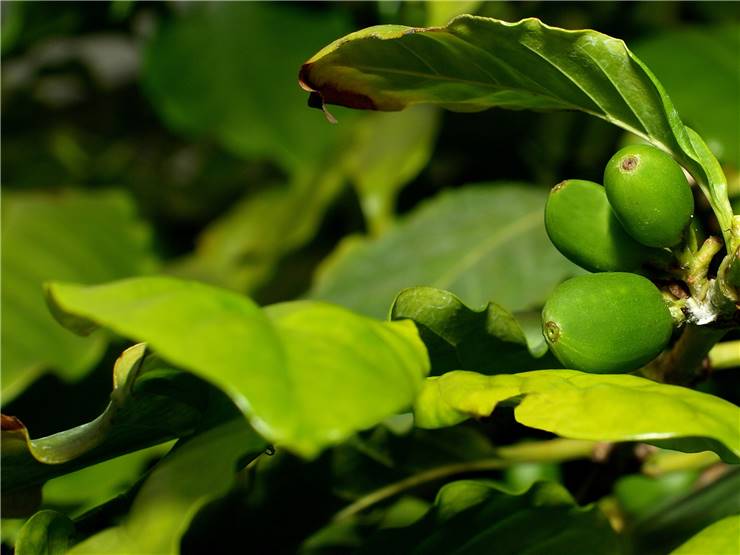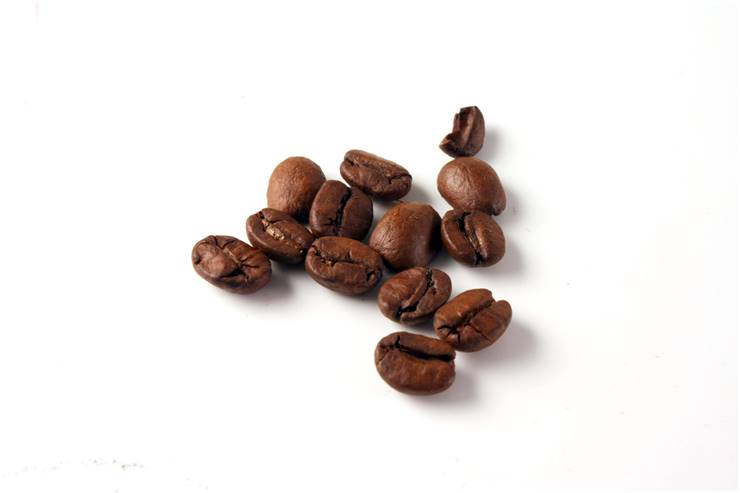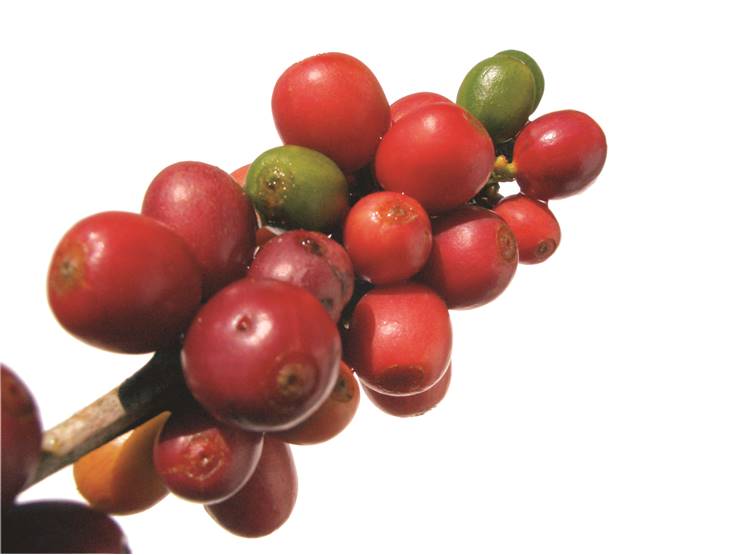Coffee's Caffeine Content Facts
Coffee represents 75% of all the caffeinated drinks consumed in the United States. Over 450,000,000 cups of coffee are consumed in the USA every day. Approximately 80% of the world's population consumes caffeine on a daily basis. The world's largest coffee producer is Brazil with over 3,970 million coffee plants.
Primary source of caffeine is the coffee "bean". A coffee making process starts with the green coffee bean. At the beginning of the process, the beans are roasted. Generally all roasted beans are classified according to their color: light, medium, dark and variants in between. Light beans contain the most caffeine, and have a more bitter taste, so also have a stronger flavor.

As the caffeine content in coffee beans varies according to the species of the coffee plant, there are the two main species of the coffee plant used to produce the coffee. These plants are Coffea Arabica and Coffee Canephora (Robusta). Coffee Arabica grown mostly in Central and South America, and its beans contain about 1.1% caffeine. Coffee Robusta, grown mostly in Indonesia and Africa, and bens contain about 2.2% caffeine.
The caffeine content in coffee beans also depend on the local environment where the coffee plants are grown, length of growing season, time of harvest, the method of process, and the genetic subspecies or varietal. So coffee beans from two different places, or coffee varietals, usually have distinctive characteristics. Even coffee grown in the same general region can vary in caffeine content.
The caffeine content of coffee beans is also determined by the length of time that the beans are in contact with the water.
The amount of caffeine in coffee depends on many factors including how big the cup, how much coffee is used, how the coffee is brewed and the type of coffee bean used. The variability in the amount of caffeine in a cup of coffee is relatively large even if prepared by the same person.
The caffeine content can vary sharply and the natural range of variation in caffeine content is very considerable.
A regular 8 ounce cup of coffee contains 100mg of caffeine but it may range between 80 and 200mg.
(The caffeine content of a 5 ounce cup of brewed coffee contains about 50 to 125mg.)
The caffeine content per gram of coffee:
Average caffeine content of regular coffee is 13.5mg per gram of coffee.
Average caffeine content in instant coffee 32.5 mg per gram of coffee.
Average caffeine content of decaffeinated coffee is 0.7 mg per gram of coffee.
Comparison with other beverages:
Traditional coffee contains more caffeine than instant. A cup of instant coffee contains about 40 - 135 mg of caffeine; average 65 mg. Brewed coffee has approximately 40% more caffeine more than instant coffee.
Espresso contains average about 100mg of caffeine per 2 ounce cup, but values ranged from 58 mgs up to 185mg. An 8 ounce cup of espresso has half to two-thirds as much caffeine as an 8 ounce cup of regular brewed coffee.
The decaffeination process of coffee effectively removes about 97% of the caffeine, leaving approximately 2 to 5 mg in a cup of coffee.
An average 8 ounce cup of black tea contains about 40 - 75mg.
Green tea contains 15 to 30 mg of caffeine content per 8 ounces cup.
Instant tea caffeine content is about 12 - 30mg.
When milk is added to coffee that actually reduces the taste of the caffeine found in coffee. Milk dilutes the caffeine and it provides a little bit of sweetness and texture to the coffee. So a lot of people prefer to have their coffee with cream and sugar to mask the taste and flavor of caffeine.

Recommended consumption of caffeine is in amounts less than 300mg per day, which is roughly equivalent to 3 - 4 cups of coffee. The maximum amount of caffeine we should consume in a day is 600mg, which would mean four to six cups of brewed coffee.
Coffee is the world’s most popular stimulant. However, a pregnant women and people with high blood pressure are advised to limit their caffeine consumption.
Note: All figures are approximate, this site does not provide medical advice, diagnosis or treatment.


